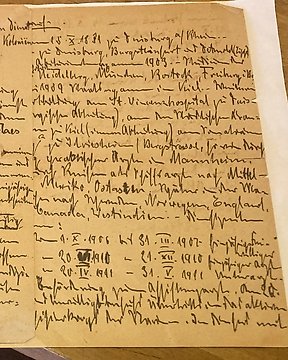
Anonym - Application letter from a German doctor in the Dutch Colonial Ministry ( Inlichtingsbureau voor den - 1919
Nr. 83228789

Nr. 83228789

Lot of 3 folio sheets - no.s 114+115+116 , from the rare German edition of the 1493 Nuremberg Chronicle [approx.500 copies printed] .Text illustrated with altogether 35 woodcut engravings, depicting mostly Saints, Popes and Roman Emperors of the 3rd century A.D. [Comodus, Helius Pertinax, Didius, Severus ...]. several Roman Writers, and more
In generally fair condition for its age . large waterstain in upper right corners, some light agetoning + soiling. Old repairs.
Felicitas of Rome (c. 101 – 165), also anglicized as Felicity, is a saint numbered among the Christian martyrs. Apart from her name, the only thing known for certain about this martyr is that she was buried in the Cemetery of Maximus, on the Via Salaria on a 23 November. However, a legend presents her as the mother of the seven martyrs whose feast is celebrated on 10 July. The Eastern Orthodox Church celebrates their martyrdom on 25 January.
The Nuremberg Chronicle is an illustrated encyclopedia consisting of world historical accounts, as well as accounts told through biblical paraphrase. Subjects include human history in relation to the Bible, illustrated mythological creatures, and the histories of important Christian and secular cities from antiquity. Finished in 1493, it was originally written in Latin by Hartmann Schedel, and a German version was translated by Georg Alt. It is one of the best-documented early printed books—an incunabulum—and one of the first to successfully integrate illustrations and text.
The author of the text, Hartmann Schedel, was a medical doctor, humanist and book collector. He earned a doctorate in medicine in Padua in 1466, then settled in Nuremberg to practice medicine.
The painters, Wolgemut and Pleydenwurff, were to provide the layout of the chronicle, to oversee the production of the woodcuts. Albrecht Duerer, then an apprentice with Pleydenwurff, is believed to have contributed to the engraving of the illustrations.
Anton Koberger, printer of the Nuremberg Chronicle, printed the first humanist book in Nuremberg in 1472. Sebald Shreyer, one of the patrons of the chronicle, commissioned paintings from classical mythology for the grand salon of his house. Hartmann Schedel, author of the chronicle, was an avid collector of both Italian Renaissance and German humanist works. Hieronymus Münzer, who assisted Schedel in writing the chronicle's chapter on geography, was among this group, as were Albrecht Dürer and Johann and Willibald Pirckheimer.
Cum să cumperi de la Catawiki
1. Descoperă ceva special
2. Plasează cea mai mare ofertă
3. Fă o plată sigură